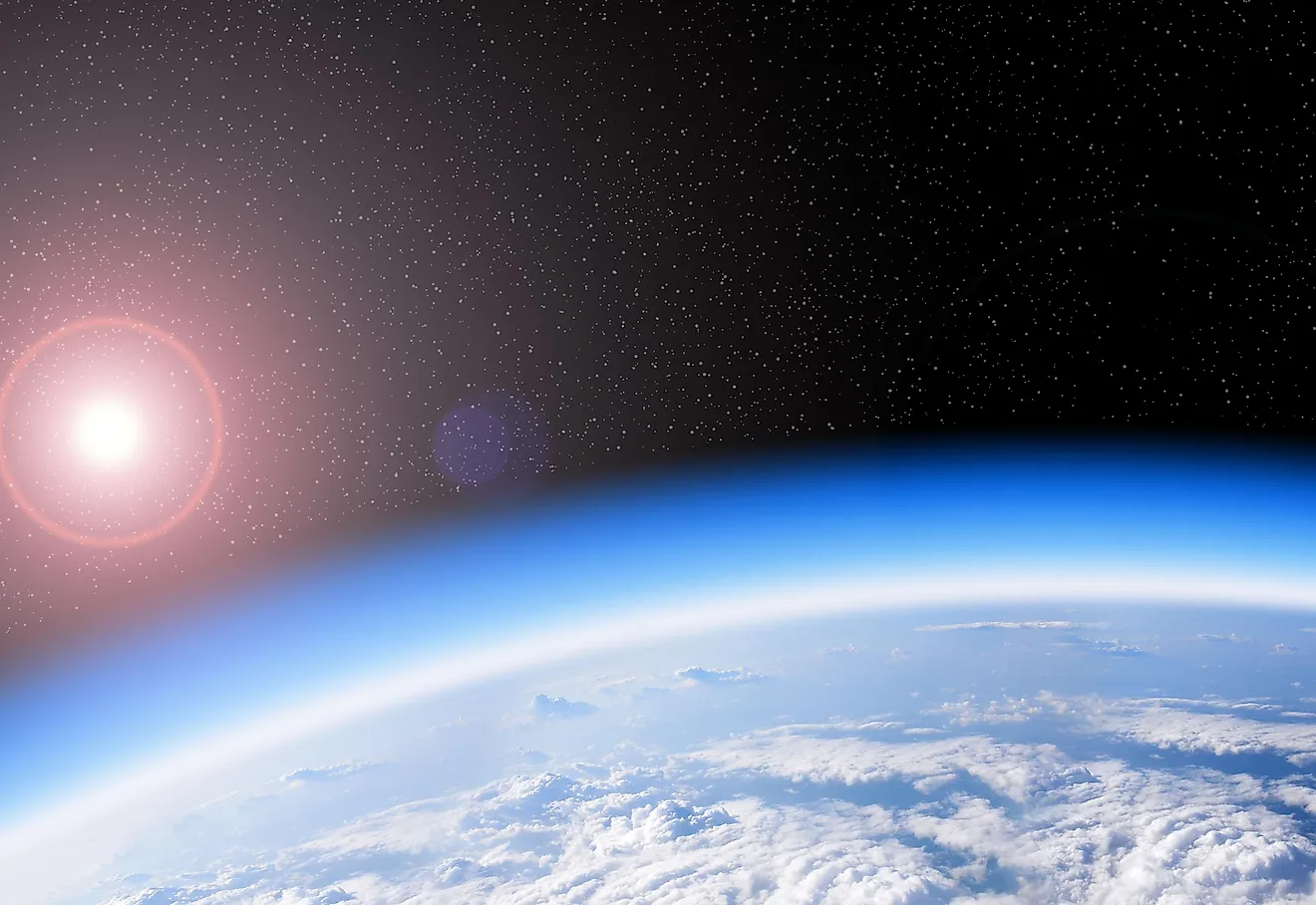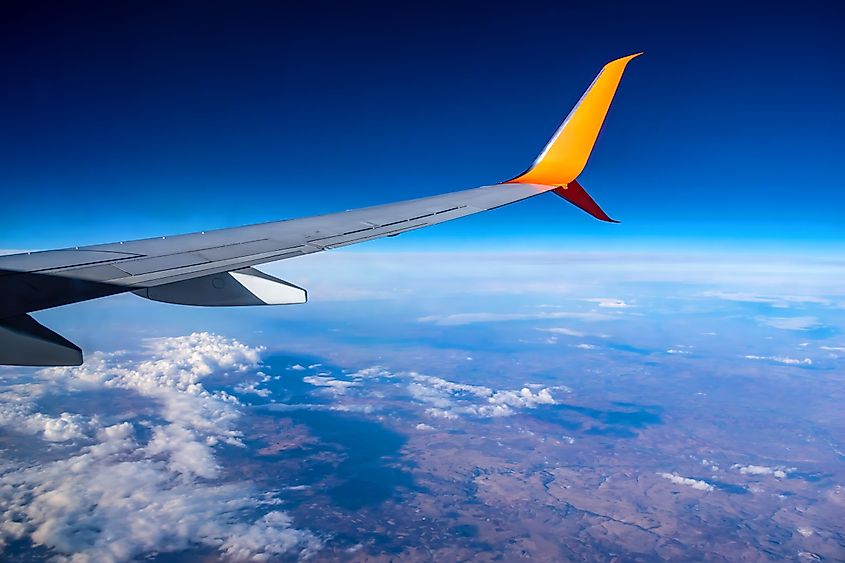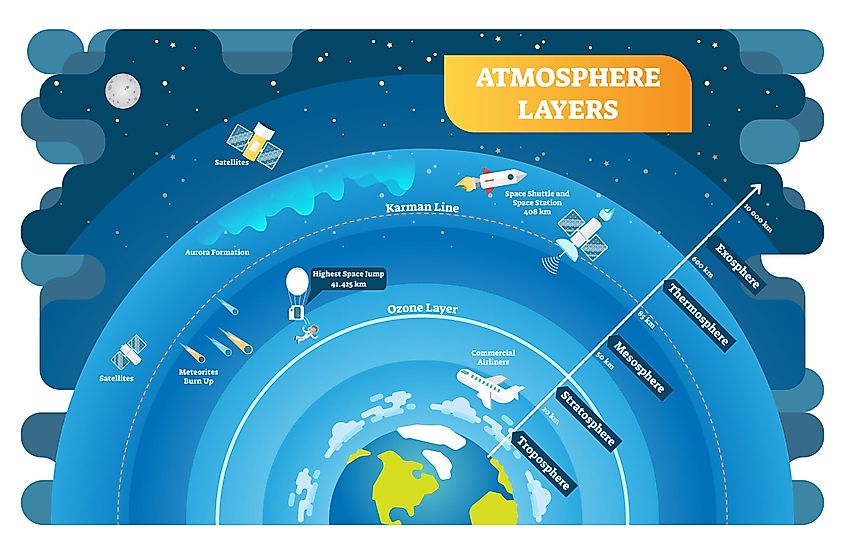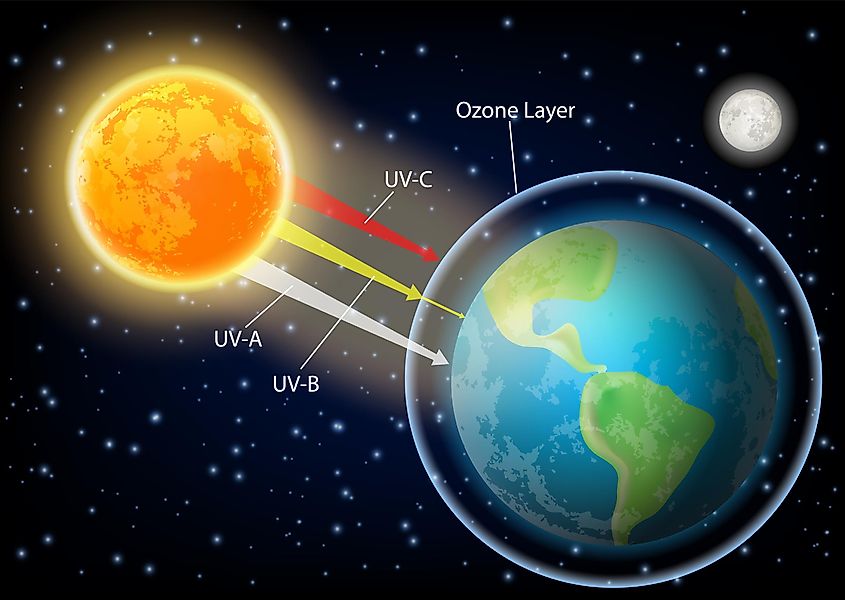What Is The Earth's Atmosphere Made Of?

- The atmosphere starts at the ground and extends to 10,000 km (6,214 miles) above the surface.
- Most of earth’s atmosphere is not oxygen.
- Most of the atmosphere's mass is located 8-15 km above Earth’s surface.
Earth’s atmosphere is composed of about 78% nitrogen, 21% oxygen, 0.9% argon, and 0.1% other gases. Trace amounts of carbon dioxide, methane, water vapor, and neon are some of the other gases that make up that remaining 0.1%. While the earth’s atmosphere is mainly gases, it also contains tiny particles such as dust and pollen. Some unnatural particles also collect in the atmosphere and cause air pollution. These include anything from aerosols to carbon emissions from vehicles and power plants.

As humans, we rely on the atmosphere around us for life. We breathe it, we live in it—without it, we wouldn’t survive. Not only does the atmosphere around us need to be made of a certain composition for us to thrive, but it also needs to be one in which plants and food can grow, and one that protects us from the elements. Having oxygen we can breathe is just as important as being protected from the harsh sun rays, or the open expanses of space, and Earth has just the right location and atmospheric chemical composition to sustain life for humans and all other life forms that call Earth home.
What Is The Atmosphere?
The atmosphere is everything above the Earth’s surface, reaching straight upwards roughly 10,000 km (6,214 miles) into space. Everything beyond this distance is considered to be outer space. While the Earth’s atmosphere does reach very far out, the denser portion is located much closer to the surface, at a distance of 8 to 15 km away. About 75% of the atmosphere's mass is found in this dense portion. This is why higher elevations can be described as having "thinner" atmospheres, and why climbing large mountains or increasing elevation at speed can often cause altitude sickness. This "sickness" is the human body’s reaction to being in a less hospitable environment, an area with thinner air that does not have as strong a concentration of the gases we are accustomed to.
The drop in air pressure is why we can feel popping in our ears when we increase altitude. This low pressure happens because there is less gravitational force in the top portions of the atmosphere than there is closer to the surface, where all of the atmosphere's weight can be felt.
The Layers Of The Atmosphere

Because the atmosphere reaches so far from the Earth’s surface, it has been split into several different layers. Aside from the surface itself, there are five other layers in our atmosphere: the troposphere, stratosphere, mesosphere, thermosphere and lastly, furthest from the surface, the exosphere. These layers are divided based on temperature.
Troposphere
The troposphere is the layer closest to the Earth’s surface. It is the area of space roughly between 8 to 15 km above the ground. This layer includes most of the cloud layers along with the majority of water particles and dust.
The troposphere is not the same thickness all over the Earth. It is actually known to be at its thinnest at the South and North Poles and thicker around the equator. As you rise within the troposphere, temperatures begin to decrease. On top of this layer is what is referred to as the tropopause.
Stratosphere
The stratosphere is the second layer of the atmosphere just above the troposphere. It ranges from approximately 15 km above the earth’s surface to 50 km (30 miles) above the Earth. The stratosphere is most well known for having a large amount of ozone gas, an oxygen compound. Because of this, this region is often referred to as the "ozone layer."

The ozone layer is often referenced in relation to climate change, or referred to as having a "hole" in it. This is important because the ozone forms a protective barrier between the sun's harsh rays and life on earth. Without this barrier, temperatures would rise, and sun exposure would increase, making the earth uninhabitable. This is why the weakening of the ozone layer has had such alarming effects on the climate of Earth. Similarly, the temperature within the stratosphere increases with altitude, contrary to what happens in the lower layer. Above the stratosphere, between it and the next official layer, is the stratopause.
Mesosphere
The next layer in the Earth’s atmosphere is known as the mesosphere. The mesosphere reaches 85 km (53 miles) out from the surface of the earth. It is very cold, with the coldest temperatures found at the top of this layer where it can reach -90 °C (-130 °F). The atmosphere is much thinner here than it is closer to the Earth, but there is still enough density to cause space debris to burn when it enters this layer. This is why we see shooting stars, which are space rocks burning through the mesosphere. In the same way, spacecraft need special heat-resistant shells to ensure the structures do not burn when passing through or re-entering the mesosphere. Like the previous layers, the mesosphere is topped by a pause, this one called the mesopause.
Thermosphere
Above the mesopause, ending some 600 km (372 miles) from the surface of the Earth is the thermosphere. As the prefix Thermo suggests, this layer has much higher temperatures. Because this layer is much closer to the sun, it can reach temperatures up to 2,000 °C (3,600 °F).
Exosphere
The final layer is where the Earth’s atmosphere meets outer space. This region is known as the exosphere, as it circles all the other layers. This layer is almost as thin as space itself, as the gravitational pull of Earth is too weak to hold many molecules. This means that the layer is extremely thin, and blends into outer space as molecules float free from Earth.











